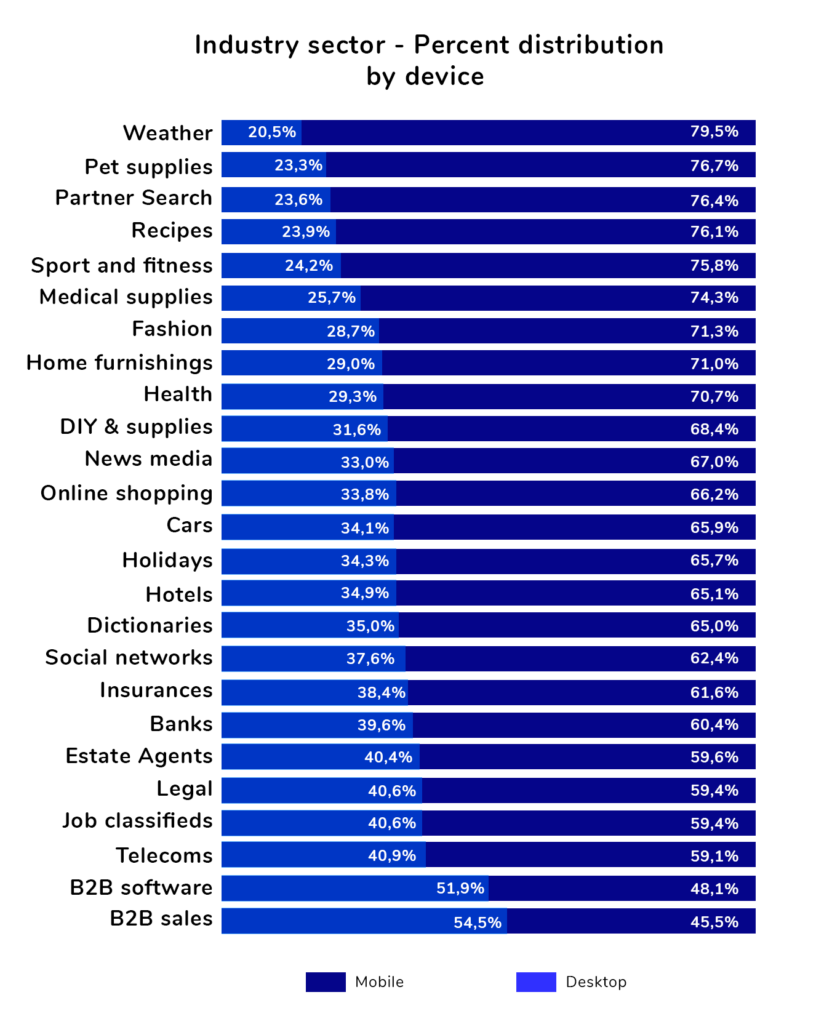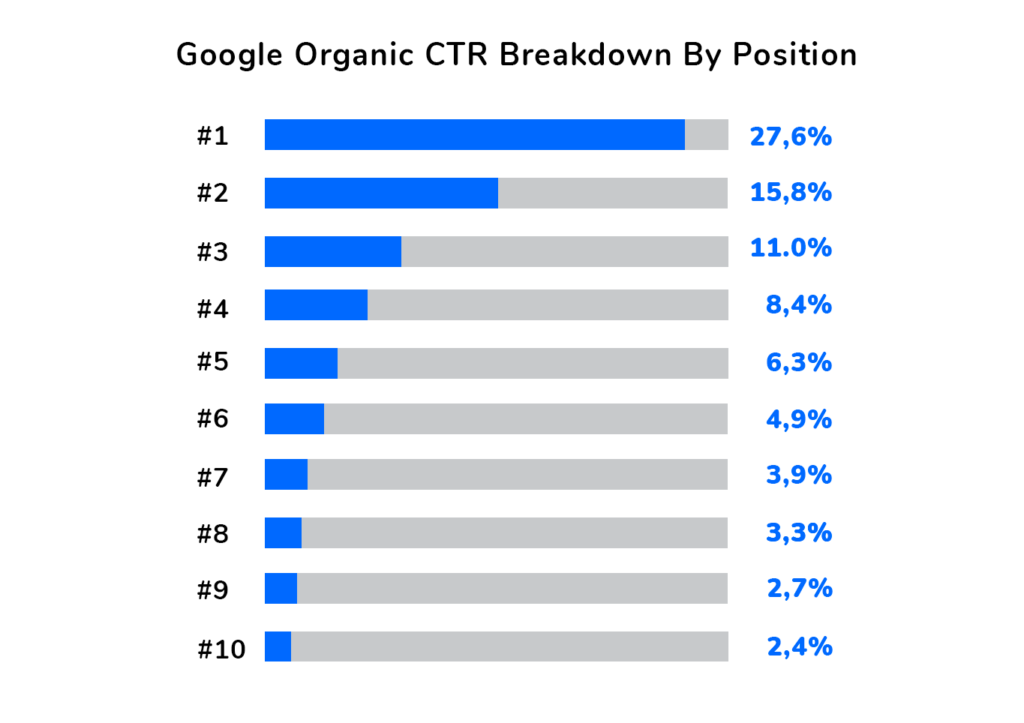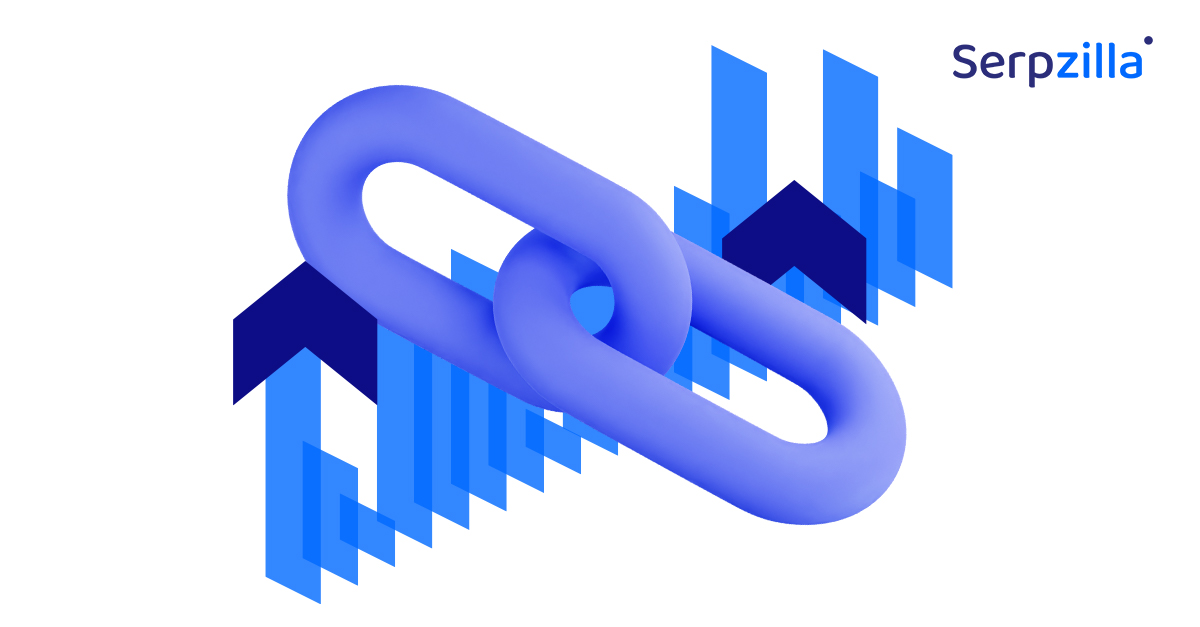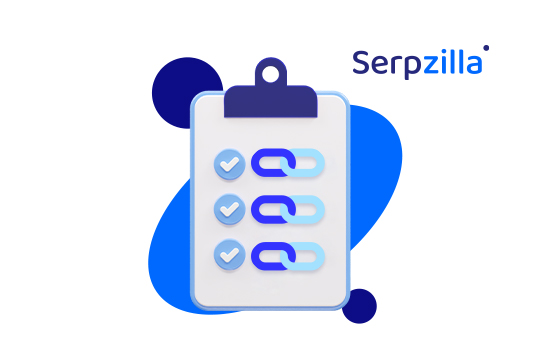Among the metrics that help you measure the success of your SEO marketing campaign, CTR is one of the most transparent. CTR or Click-Through-Rate shows how many people among those who see a link to your resource anywhere, be it an ad or a backlink, actually click it. Good CTR means that your links are healthy, relevantly placed, that they are attractive and they reach the target audience. All this is a sign that your SEO efforts are well-placed. Although Google has never directly confirmed that CTR is one of the factors that they use in algorithms calculating SERP placement, it still affects your performance indirectly because good CTR means that you are driving organic traffic and that all is right with your backlink profile. In today’s article, let’s delve deeper into CTR-related questions: How to increase your organic CTR, why you need it and what common mistakes to avoid when working to improve your CTR.

Why Good CTR is Beneficial for SEO
Let’s first take a look at the perks increasing your CTR gives you, aside from the obvious:
- Enhanced Traffic and Visibility
While increased traffic is the most immediate and obvious advantage of improved CTR, pages that get more clicks for their given SERP position soon demonstrate upward movement in the search rankings. This means, more visitors, engagements, leads, conversions.
- Indicates Relevance and Quality
A nice CTR figure is always a clear signal for search engines that a webpage is a relevant and appealing result for a particular query. While it’s still a subject of a hot debate, how much of a direct role CTR plays in search rankings, it’s still obvious that search engines use user engagement metrics as indicators of content quality and relevance. Pages that fulfill user intent and better engage visitors are likely to be rewarded with better visibility.
- Improved User Experience Signals
This is specifically important because of the most recent Google Core Update. As of March 2024, user experience plays a more significant role in calculating page rankings. Good CTR often means that your website provides a good user experience, indicated by your backlinks’ ability to generate interest through compelling titles and descriptions. For Google it may mean that this positive user experience is likely to extend to your website itself, which also probably means lower bounce rates and higher time on site. Those also are factors that can indirectly influence search rankings.
- Cost Efficiency
Increasing organic CTR is a cost-effective strategy to drive more traffic without paying for ads.
- Complements your Other SEO efforts
All the effort that you put into keyword research, on-page optimization, and creating high-quality content can be maximized by a high CTR. The visibility gained through these efforts basically translates into actual website visits, making all other SEO activities you engage in more effective and efficient.
10 Tactics to Use to Increase your Organic CTR
Now, let’s speak about the actual steps you can take to increase your organic CTR.
- Optimize Title Tags
Place your primary keyword near the beginning of the title. This is a clear signal of relevance to Google and your audience alike. The titles themselves should be compelling and demonstrate the content value to the users, encouraging them to click on your link.
- Use Creative Meta Descriptions
Highlight and clearly state exactly what goodies the users will be getting out of visiting your site. Call-to-actions also work great to encourage users to click on that link.
- Use Rich Snippets and Structured Data
Implementing schema markups helps Google understand your content better. Rich snippets always stand out in SERP. Use different types of rich snippets, depending on the type of content you are dealing in. Use recipes, how-tos, reviews, FAQs to make your entry more appealing to the audience
- Optimize for Featured Snippets
Structure your content in such a way that it directly addresses and answers questions users may be asking in their search queries. Remember that using clear and readable formatting, such as lists, tables, short paragraphs, increases your chances of being picked as a featured snippet.
- Improve your URL structure
Make sure that your URL itself is clean and readable and gives your potential visitor an idea of what they will find. Google views it as a good trust signal.
- Focus on Readability
Structure your content so that it is readable. This means breaking it into digestible logical pieces, using clear headers and subheaders, numbered and bulleted lists.
- Utilize Emotional Triggers
People often make browsing decisions quickly, emotionally, on an impulse. Using words that appeal to curiosity, excitement or urgency can increase your CTR.
- Make Your Content Mobile-friendly
Mobile searches compile a huge percentage of web browsing, so making sure that your site is usable on a mobile phone increases your retention, time spent on site and user experience.
- Use A/B testing
Try out different combinations of formats, titles, descriptions and solutions and test them to see what works best with your audience.
- Focus on User Intent
When your content is well-aligned with user queries and user intent, it is looked very favorably upon by Google. Users tend to click on links they believe answer their search queries precisely. Besides, this will greatly improve user experience for your site, which will give you many additional perks.
Mistakes and Pitfalls to Avoid when Optimizing your Website to Increase Organic CTR
Optimizing for CTR increase is a strategic process that needs to be carefully planned. It is easy to ‘overdo’ certain things or to create an imbalance that will negatively impact your SEO efforts. Here are some things to look out for:
- Misleading Titles and Descriptions
Creating clickbait titles and descriptions is something that can be quite detrimental to your SEO over time because it will quickly increase your bounce rates.
- Neglecting Search Intent
If your content is poorly aligned with user intent, it can create mismatched expectations and poor user experience, which will negatively impact your rankings eventually.
- Ignoring Mobile Users
The percentage of mobile users increases every year, with handheld devices becoming more sophisticated. This means your content needs to be readable and accessible on mobile. Otherwise you miss out on a huge share of your audience. The picture below demonstrates the percent of searches for various domains that people do on mobile and desktop.

4. Failing to Update Old Content
You probably have successfully performing pieces of older content. It would be a mistake to think that if it works, you should leave it well alone. It might have outdated titles and descriptions that no longer generate clicks, so make sure you constantly review and update all of your content.
5. Expecting Miracles
There are just too many factors that influence the actual CTR numbers and depending on your niche, a ‘good’ CTR may be very different. In fact, for many niches, a 2-3% CTR is something sites from the first SERP page actually have, as seen from this example:

6. Ignoring SERP Features
Google has SERP features that can greatly improve your visibility and your CTR if you get picked for them. Not optimizing for features like featured snippets, local packs are missed opportunities.
7. Ignoring and not Analyzing your Competition
Ignoring what your competitors are doing with their titles, descriptions and other CTR optimization can lead to you missing out on successful strategies and having to make mistakes that could have been avoided otherwise.
Boost your SEO results! Link building has become fast and easy with Serpzilla. Buy quality backlinks on authority websites with high DR.

Conclusion
Improving your CTR figure is a multifaceted process that involves creativity, attention to detail and deep understanding of your target audience’s search behavior and patterns. When you optimize titles and tags, leverage SERP features that Google offers and align your content with user intent, you increase your chances to improve your organic CTR, drive more traffic to your website and create a generally positive effect on your entire SEO.









